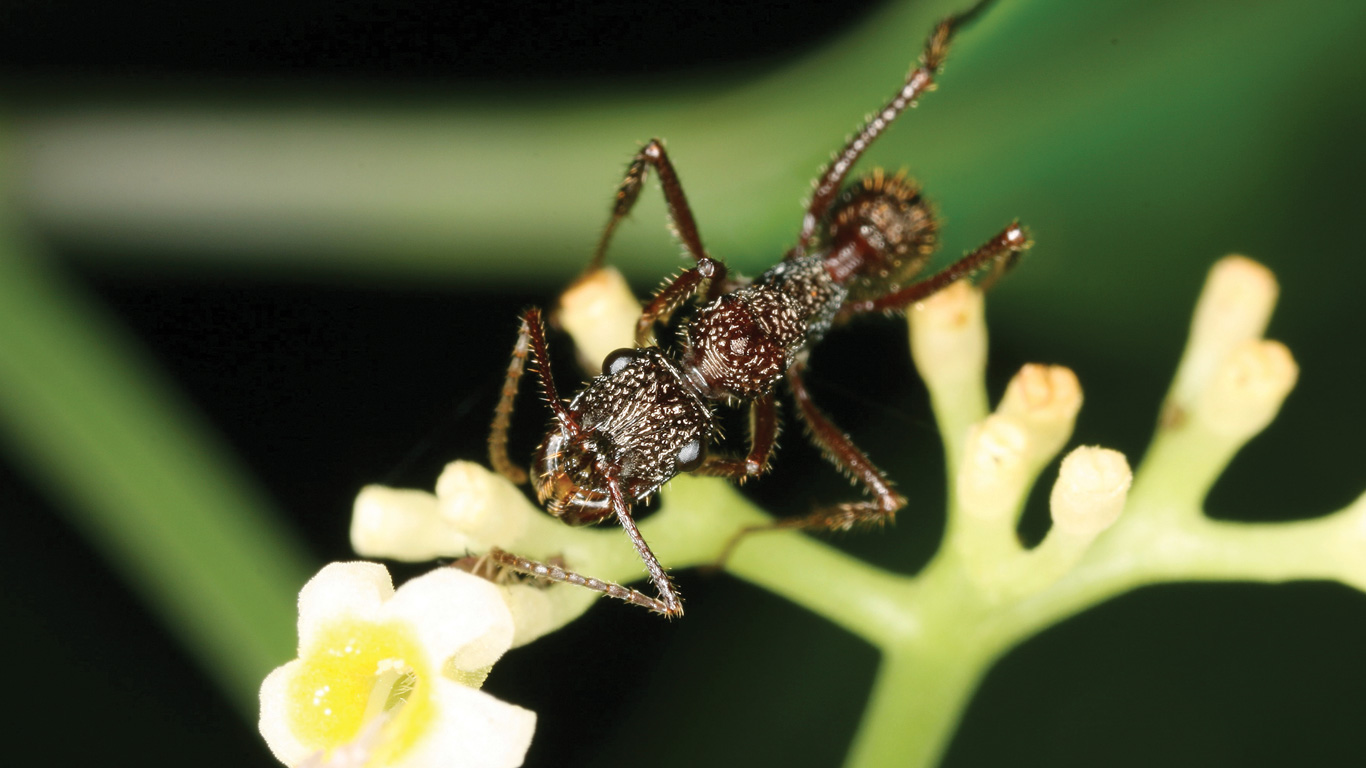
A professional, an expert–no matter what title one assigns a member of the most specialized group in an Ectatomma ruidum ant colony – a “Jack of all trades” should definitely not be one of them.
In fact, a “cunning thief” might be the most fitting, according to Terry McGlynn, professor of biology at California State University, Dominguez Hills (CSUDH), who co-published the study “Distinct types of foragers in the ant Ectatomma ruidum: typical foragers and furtive thieves” in the journal Animal Behaviour in November 2015.
The study, which was penned in collaboration with CSUDH biology students Russell Graham and Jeremy Emerson, and included the research and analysis of educators from other campuses, proposes that the new “caste” of thieving ants is a new discovery.
“Ballpark, only five percent of the colony are thieving ants. By looking among the various kinds of ants that have been studied inside the nest–when we mark and follow individuals–we can see how ants allocate work,” said McGlynn, whose work is funded by the National Science Foundation. “For example, some ants may primarily forage and occasionally nurse, while others might care for larva more while rarely foraging. But the thieves are specialized. They devote their lives to only robbing other nests, and none of the other ants in their colony are doing it.”
The researchers’ fieldwork was conducted in June-August 2014 at La Selva Biological Station, located in a lowland tropical wet forest in the Caribbean Slope of Costa Rica.
According to the paper, the thieving ants may also be distinguished by other types of behavior, such as trying to avoid detection, and freezing in place when disturbed then going in a different direction.
If you grab them, they drop their stolen food. – Terry McGlynn

“If you grab them, they drop their stolen food,” said McGlynn. “Once they get in the clear, they scamper more quickly, while regular non-thieving foragers will hang onto their food, as they know it was rightfully acquired.”
McGlynn has been teaching at CSUDH since 2007, but he began studying the rainforest ants in 1995 while he was pursuing his PhD at the University of Colorado. He has known for two decades that some of the ants “behave as robbers,” but did not know that they were specialized until his team tracked 47 of the thieves in the colony last year.
Since his arrival at CSUDH, McGlynn has been taking approximately 10 students every year to work the site in the Costa Rica rainforest.
“Now, what we’re currently working on is that it appears the thieves themselves have a lot less muscle mass; their legs are lighter,” said McGlynn. “We are assuming that is because they don’t get as much exercise as foraging ants, but that’s something we’re still working on.”
McGlynn’s study of the thieving ants was to answer a behavioral question; however, he usually doesn’t study animal behavior.
“I usually focus on ecology, and sometimes look at the biology of particular species or a community’s ecology to find what effects species’ richness and how communities assemble,” he said. “One question may ask why certain animals occur is some places and not in others, and then how changes in the environment affect where those animals occur. In regards to my research, the two common elements are that they are focused in the tropics, and they involve ants.”
In general terms, McGlynn’s work seeks to “understand how the world works.”
“There are some very basic things about forests, rainforests, social insects, and life in general that we just don’t know,” he said.